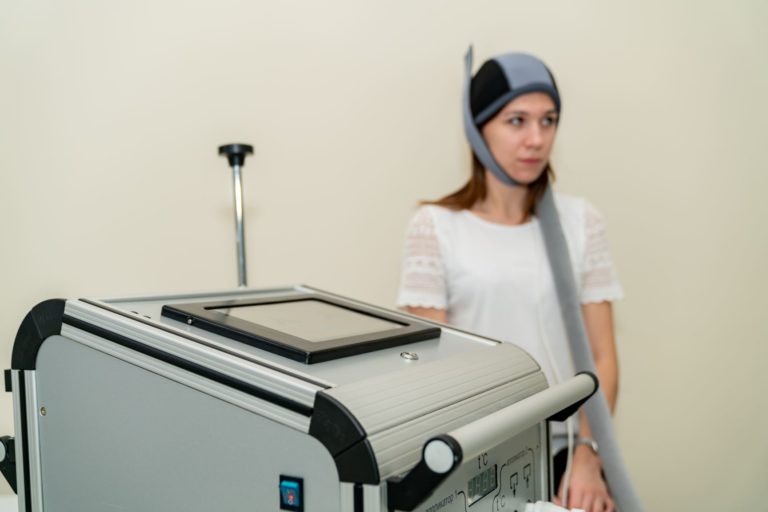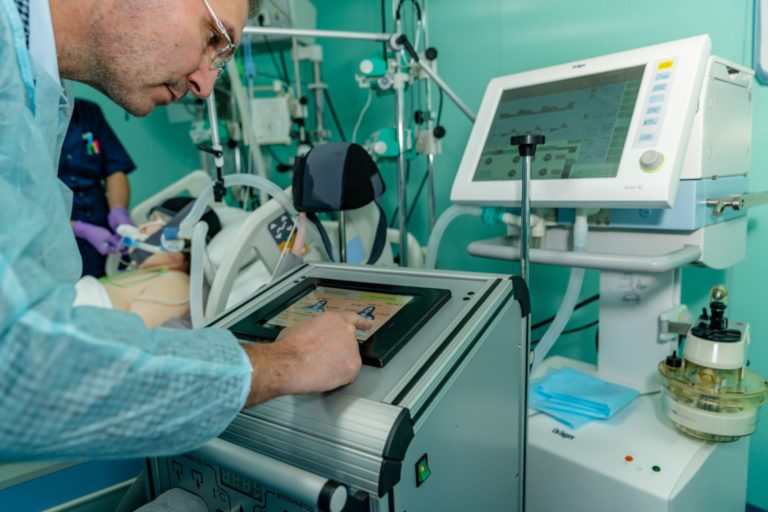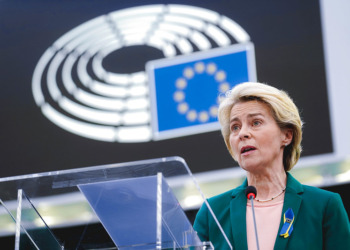Cardiovascular diseases have proved to be a serious challenge for humanity. In 2016, they took the lives of 17.9 million people worldwide, which accounts for 31% of all deaths globally. The public health community has listed a number of factors that lead to these diseases: smoking, being overweight, physical inactivity or alcohol abuse. Stress is a tricky thing. Once a person gets a heart attack there is no time for delay. Comprehensive treatment should be applied along with a rehabilitation period that can significantly extend a patient’s life.
Impakter had a chance to speak with Oleg Shevelev, Founder and CEO of Cryotechnomed, a Russian company that produces external cooling devices used by patients recovering from cardiovascular diseases.
What inspired you to start your company?
Oleg Shevelev: Cardiovascular diseases and many other illnesses, which are accompanied by the overheating and destruction of brain cells, are the cause of death for the majority of the population on our planet. Furthermore, they significantly decrease the quality of life. According to WHO, Russia is the world leader in the death rate from cardiovascular diseases. Over 800 thousand people die from them in our country annually. And it’s not merely an impersonal statistic for all members of the CryoTechnoMed team. We have all lost someone close due to these sicknesses.
I have always had a curious mind, even during my childhood. During my student years I stumbled across several articles written by Henri Laborit and Vladimir Negovski and I discovered the neuroprotective effect of cooling. I was fascinated that the solution, which appears simply at first sight, is the only method that possesses a neuroprotective effect known to humankind and can save billions of lives. This made it even harder to believe that despite the evident benefit of implementation, this method, called «therapeutic hypothermia», did not have a chance to evolve due to the complexity of its induction and low safety for the patient.
During several years of research, development and clinical trials, we invented the equipment for craniocerebral hypothermia (CCH) – «THE-01» and its method of its application. CCH reduces the temperature of the brain in the area of lesion directly and achieves a therapeutic effect safely, without complications and side effects. Post-registration clinical trials in top clinics in Russia proved that our method halves mortality and the disability rate after a stroke without complications and side effects. This encouraged us to go further. With time we also noticed that craniocerebral hypothermia reduced time spent in ICUs, the rehabilitation period and the pharmacological assistance needed.
We are only at the beginning of our journey. That’s why we know many of our patients personally. Their stories of recovery are an incredible encouragement for us. Only several months ago we witnessed an astonishing example. A young girl, who got into a serious motorcycle accident, was admitted into our clinic after 38 days of this terrible event. She reached a clear level of consciousness after 17 hypothermia sessions, and after 22 sessions she left the ICU and regained the ability to move. This survival and reunion with family stories fuel our belief that we are doing an important and timely thing.
Editor’s Picks — Related Articles:

“Health Care Workers: The Gatekeepers to Achieving Global Health and Wellbeing”

“The World Number One Killer: Non-Communicable Diseases”
How does CryoTechnoMed’s technology work?
OS: CryoTechnoMed was established in Moscow in April 2012. We are pioneers in the development and introduction of hypothermia equipment in the Russian market. Craniocerebral hypothermia, as briefly discussed previously, is a controlled cooling of the neurons, which initiates neuroprotection. It prolongs the period of irreversible brain damage and, therefore, significantly increases chances for survival and the successful rehabilitation of the patient.
Our technology works in the following way: a cryoapplicator in the form of a helmet cools the scalp and allows for the contact heat removal from the hairy part of the scalp. It also cools down venous blood of the head which gradually spreads all over the brain, including core area of the lesion, reduces it’s temperature and initiates neuroprotection. This enhances the strength of cell membranes and decreases their requirement in oxygen, making them more viable.
The reduction of the brain temperature strengthens cell membranes and helps them to resist heat attacks from the injured area.

We started our project with the application of hypothermia only in emergency medicine. We still believe that it can bring the most benefit in case of acute impairment of cerebral circulation (ischemic and hemorrhagic strokes), neurotraumas (brain injuries and neurosurgery) and cardiopulmonary resuscitation. However, with time we realized that this method is therapeutically effective for other diseases, which are accompanied by overheating. And there are plenty of those, for example:
- Addiction medicine: abstinent syndrome, delirium;
- Affective disorders: Depression, anxiety;
- Central nervous system diseases: Parkinson and Alzheimer;
- Neurological headaches: migraines;
- Acute infectious diseases: sepsis;
- Rehabilitation in case of brain injuries;
- Psycho-emotional, physical and intellectual pressure;
- Recovery and raise of the level of consciousness and awareness in case of severe brain damage.
Our mission is to create effective hypothermia technology to reduce mortality, improve the quality of life and promote fulfilling longevity.
Where do you see your company in five years?
OS: For the next 5 years, we have set 3 fundamental goals for ourselves.
Firstly, we want to introduce craniocerebral hypothermia into medical practice in hospitals and gerontological institutions in Russia and CIS countries. Currently we are working with the Ministry of Healthcare of Russia to include hypothermia into standards and protocols of emergency medicine, similar to current European medical practice. We plan to initiate the same activities and work closely with Ministries of Healthcare in CIS countries (Kazakhstan, Uzbekistan, Belorussia) to include CCH into protocols of emergency care provision in the years 2020-2021.
This prime goal is justified by the mortality, disability, and reduction of quality of life from these diseases, which our technology can cure. The statistic in Russia and CIS countries is genuinely staggering. In Russia alone almost 800 thousand people die from cerebrovascular diseases annually, over 10% of our population suffers from drug and alcohol addictions, 2 million people are diagnosed with dementia and on top of that, our mortality rate from injuries caused by car accidents is 3 to 4 times higher than that of the developed world. Moreover, the lack of financing of healthcare in these countries requires optimization of expenses and development of new economically efficient methods of treatment.
Secondly, we plan to complete the development and registration of a portable miniature model of THE. The price for this equipment will be significantly less expensive, which will allow us to make craniocerebral hypothermia more affordable and to expand the area of its application. It will become possible to use our equipment at home and in emergency cars when a patient must be transported long distances.
Thirdly, we want to establish our brand on the market and reach regular sales of up to 1,000 units per year.
Why do we need more devices for rapid induction of hypothermia?
OS: As I mentioned previously, general therapeutic hypothermia is currently included in protocols of emergency care in developed countries. It is 17% of our planet. This type of cooling, unlike craniocerebral hypothermia, is applied very narrowly in case of neuro- and cardiosurgeries, cardiopulmonary resuscitation in case of heart failure and severe strokes. In other words, more than 83% of the population of Earth does not have access to healthcare which is enhanced by therapeutic hypothermia. So it is advised that everyone must learn CPR by attending CPR classes like the ones at CPR Certification Lubbock.
We already talked about terrifying statistics of death rate and disability in case of diseases accompanied by the overheating of neurons in CIS countries. In other regions, where hypothermia is not applied, the situation is either similar or even more alarming. The healthcare sector of these countries can really benefit from such an easy to apply and safe technology such as ours.
Every year the whole population of Deli dies from cerebrovascular diseases. The number of people diagnosed with dementia worldwide will grow by as much as 150 million people by the year 2015. If these arguments are not convincing enough, then let’s talk about money. The world expenses on the treatment and rehabilitation of cerebrovascular diseases are estimated at hundreds of billions of USD dollars. We think that these two reasons are enough to justify the necessity of craniocerebral hypothermia across the whole world.
We offer a unique method, which is protected by patents and not applied anywhere else in the world. In developed countries, general hypothermia is integrated into medical practice. Its supporters think, that to cool down the temperature of the brain, it is necessary to reduce the temperature of the blood. Such an approach requires instrumental and pharmacological assistance (sedation, myorelaxation, medical ventilator). Also, since the cooling of internal organs of the body has an adverse effect on their functioning, this method is accompanied by dangerous side effects (pneumonia, infections). Furthermore, this process does not take into consideration the fact, that the edema forms in the area of the lesion, which does not allow the cold flow to reach the overheated area, making general hypothermia merely ineffective.
We reduce the temperature of the brain and target area of lesion directly. We can cool down the brain to as low as 25-27⁰С without decreasing the temperature of the whole body. As a result, our method can be used in different states of consciousness: conscious, in a coma and in case of medical anesthesia. Also, it is a much safer alternative, since we do not reduce the temperature of body organs. This allows avoiding infections, fevers, heart failure, and arrhythmia. Finally, the procedure is straightforward and does not require any specialized training for medical staff.

How many people have used your machine so far?
OS: Twenty-four units of «THE-01» are successfully operating in 20 top clinics in Russia and Kazakhstan. Over five thousand patients have been treated and we have validated our method. It took us over four years to conduct post-registration clinical trials of application of hypothermia in emergency medicine and some time to find a reliable partner for serial production. Having said all this, we plan to start mass sales this year.
What kind of impact do you think you can have on healthcare?
OS: The main impact relates, of course, to our primary field of activities. We address the most critical challenges of modern world healthcare:
- We reduce mortality and disability of population,
- We increase life expectancy and quality of living,
- We assist in vocational rehabilitation and active longevity.
Introduction of our technology into medical practice will allow us to create additional working places and increase tax payments to the government.
What are your thoughts about the SDGs (Sustainable Development Goals)? How do you think your company can offer a positive contribution in that sense?
OS: «CryoTechnoMed» fully shares the vision, expressed in Sustainable Development Goals. Considering the field of our operation, we think that we fit into the third goal perfectly – «to ensure healthy lives and promote well-being for all at all ages».
As I previously mentioned, we aspire to promote hypothermia in Russia, CIS, India and China, since diseases that can be cured using «THE-01», are the leading causes of mortality and therapeutic hypothermia market is not established at all there. We believe that this will help to solve one of the world’s biggest healthcare challenges – reducing mortality and disability in the case of cardiovascular diseases. In particular, our technology can help assist the fulfillment of the following SDG health related targets:
- «By 2030, reduce by one-third premature mortality from non-communicable diseases».
CryoTechnoMed solution: development of methods and equipment for therapy and prevention of non-communicable diseases, which are accompanied by overheating of the brain, which will half the mortality rate.
- «Strengthen the prevention and treatment of substance abuse, including narcotic drug abuse and harmful use of alcohol».
CryoTechnoMed solution: incorporation of craniocerebral hypothermia into addiction medicine for therapy and prevention of alcohol and drug addictions. «THE-01» will allow improving neurological deficit, effectively terminate delirium and abstinent syndromes and increase remission periods up to complete recovery.
- «By 2020, halve the number of global deaths and injuries from road traffic accidents».
CryoTechnoMed solution: application of «THE» line in emergency cars and ICUs for therapy of brain injuries which were caused by car accidents to reduce the mortality rate by half.
- «Strengthen the capacity of all countries, in particular developing countries, for early warning, risk reduction and management of national and global health risks».
CryoTechnoMed solution: Inclusion of «THE-01» into Russian National Healthcare programs «Healthcare» and «Demographics».
Editors Note: The opinions expressed here by Impakter.com columnists are their own, not those of Impakter.com. Photo Credit: Cryotechnomed











